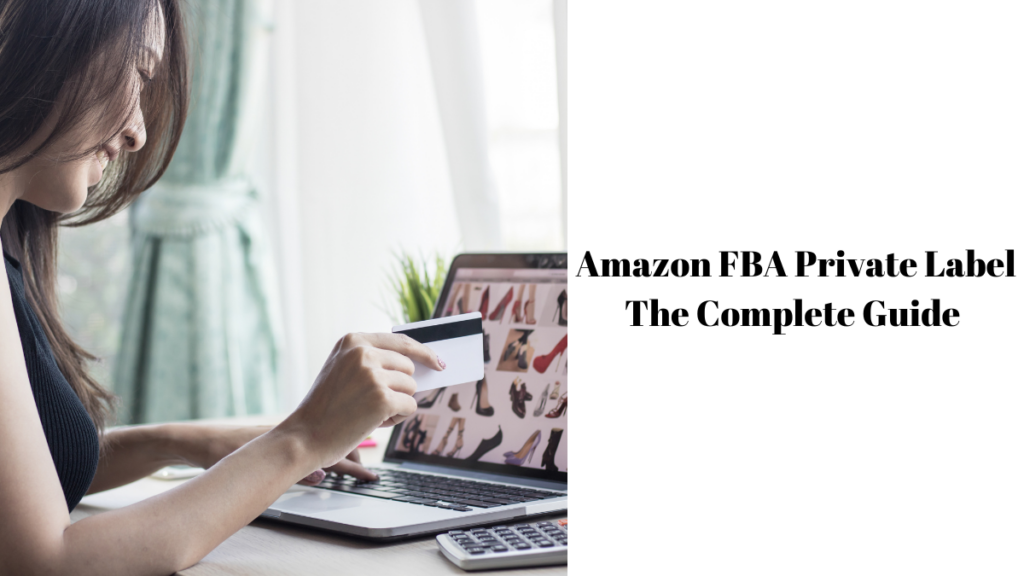Amazon FBA is a service that Amazon offers to sellers to store their products in its fulfilment centres. Amazon does everything from storage, packing, and shipping of products to customer service and returns. This service has enabled small businesses and individuals to sell products online and expand their customer base.
- Steps for Amazon FBA Private Label
- Step 1: Product Research and Selection
- Step 2: Finding a Supplier
- Step 3: Creating Your Brand
- Step 4: Listing Your Product on Amazon
- Step 5: Launching and Promoting Your Product
- Step 6: Managing Inventory
- Step 7: Customer Service
- Step 8: Scaling Your Business
- What are some common mistakes to avoid when starting an Amazon FBA Private Label business?
- Questions Asked
- What is Amazon FBA?
- What is Private Labeling?
- What criteria do I use to choose a product for my Amazon FBA Private Label business?
- Who can be my supplier of this product?
- Read More:
Steps for Amazon FBA Private Label
You should know that private labelling is selling products under your own brand. These goods are often produced by a third party and sold under your brand name. Using Amazon FBA with private labelling is a potent weapon in the online seller’s arsenal. Have a look at Amazon FBA Private Label. Let’s start:
Step 1: Product Research and Selection
Product research and selection are the first steps in starting an Amazon FBA Private Label business. You have to locate a popular product that is not overcrowded with competition. Tools such as Jungle Scout or Helium 10 will assist you in assessing market trends and competition.
Step 2: Finding a Supplier
After selecting a product, the next thing to do is to identify a trustworthy supplier. Websites such as Alibaba or Global Sources can serve as a good reference. In selecting a supplier, one should consider such factors as the cost, the minimum order quantity, and the reputation of the supplier.
Step 3: Creating Your Brand
Branding involves naming the brand, designing a logo, and designing product packaging. Your brand should reflect the value and quality of your product. The logo can be designed using online tools such as Canva, while packaging can be designed using Fiverr.
Step 4: Listing Your Product on Amazon
When your product is ready, you can then upload it on Amazon. You will have to develop an attractive product listing containing high-quality images and a comprehensive product description. You should also perform keyword research to make sure that your product is searchable by potential customers.
Step 5: Launching and Promoting Your Product
The second step after listing your product is to launch and market it. This may include approaches such as Amazon PPC (Pay Per Click) ads, discounts or giveaways, and customer reviews.
Step 6: Managing Inventory
One of the most important aspects of running an Amazon FBA Private Label business is inventory management. It is important to ensure there is enough stock to meet customer demand but only a little left with unwanted stock.
Amazon has tools that allow you to monitor your inventory levels and sales trends, which can be used to make the right decisions to restock from your supplier.
Step 7: Customer Service
Superb customer service can help your brand stand out from the rest. This includes responding quickly to customer inquiries, addressing any problems or concerns that may arise, and going above and beyond to ensure customer satisfaction. Amazon offers a communication channel for customers, but it is up to you to use it to your advantage.
Step 8: Scaling Your Business
After selling your first product and generating revenue, you may want to grow your business. This may include increasing the number of products under your brand, diversifying into other marketplaces (Amazon is present in many countries worldwide), or adopting more sophisticated marketing approaches.
What are some common mistakes to avoid when starting an Amazon FBA Private Label business?
Running an Amazon FBA Private Label business can be lucrative, but new sellers are prone to common mistakes.Here are some to avoid:
- Not Doing Enough Product Research: This is one of the most common errors. It is important to conduct complete research of possible products to make sure they are in demand, profitable, and not overcrowded with the competition.
- Ignoring Amazon’s Rules and Regulations: Amazon has tough rules for sellers. Failure to heed them can result in your account being suspended or even banned. Keep yourselves updated with the recent rules and regulations of Amazon.
- Neglecting Quality Control: Some sellers, in a bid to reduce costs, may compromise on the quality of their products. This may result in negative reviews and tarnish your brand’s image.
- Poor Customer Service: Success on Amazon is based on customer service. If you ignore customer queries or fail to address complaints effectively, you will receive bad reviews and decline in sales.
- Inadequate Product Listings: A good product description or good-quality photographs can turn away potential customers. It is necessary to spend some time to develop good product listings.
- Not Managing Inventory Properly: Being out of stock or having too much unsold inventory is costly. Effective inventory management is crucial.
- Failing to Optimize for Amazon SEO: Amazon SEO is key to making your products findable. If you ignore it, your products will not appear in the search results.
- Not Considering All Costs: Some sellers do not consider all the costs incurred, for example, shipping, Amazon fees, and advertising. This can result in mispricing your products and consequently affect your profitability.
Questions Asked
What is Amazon FBA?
Amazon FBA (Fulfillment by Amazon) refers to a service offered by Amazon to sellers. Sellers are allowed to store their products in Amazon’s fulfillment centers. Amazon manages product storage, packaging, and shipment, as well as customer support and returns.
What is Private Labeling?
Private labelling is selling products under your own brand. These products are generally produced by a third party but are sold under your brand name.
What criteria do I use to choose a product for my Amazon FBA Private Label business?
You have to look for a popular product that is not oversaturated with competition. The market trend and competition analysis can be done with the help of tools such as Jungle Scout or Helium 10.
Who can be my supplier of this product?
One can start with websites such as Alibaba or Global Sources. These factors include price, the minimum order quantity, and the supplier’s reputation.







